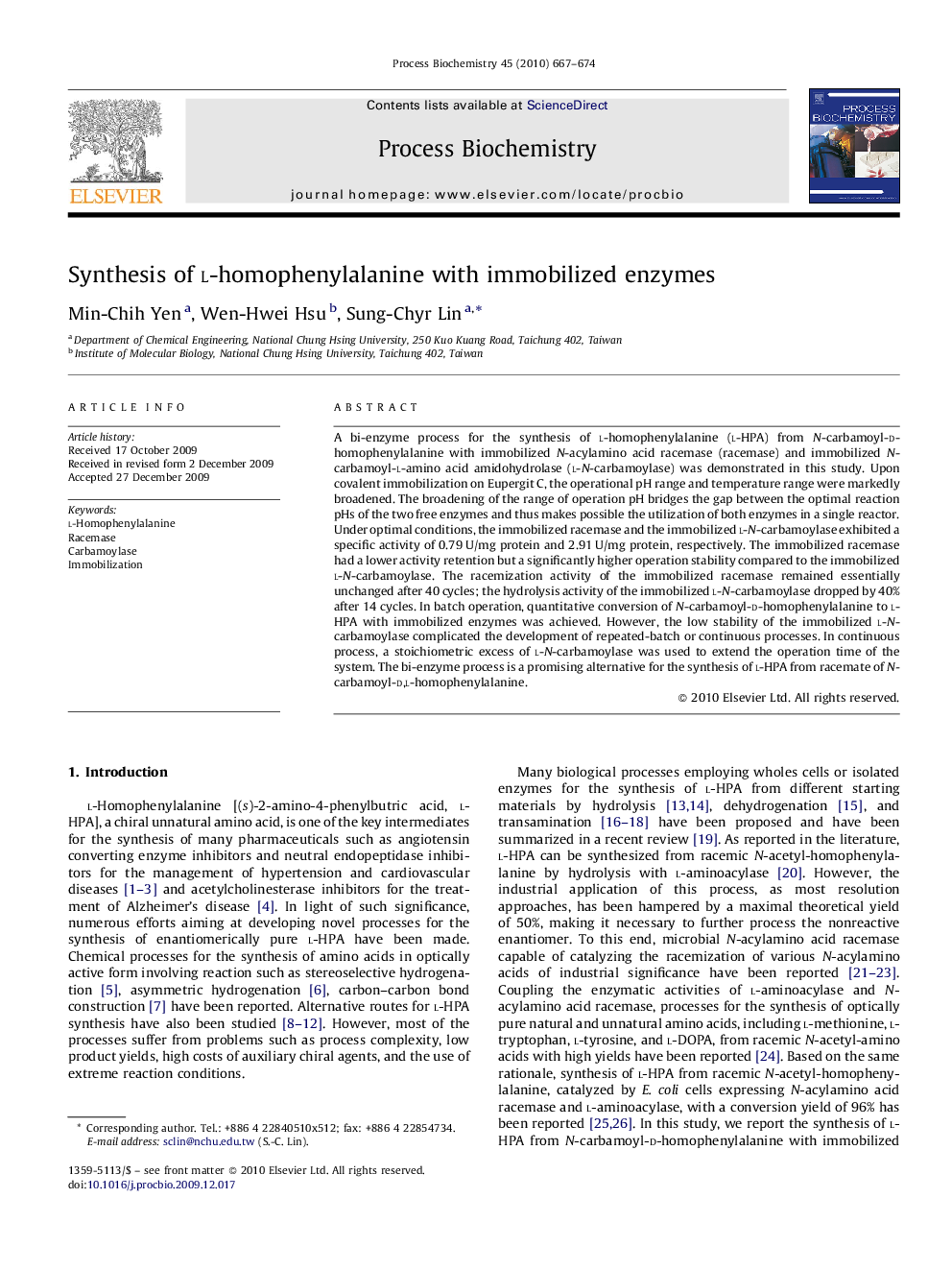| Article ID | Journal | Published Year | Pages | File Type |
|---|---|---|---|---|
| 35669 | Process Biochemistry | 2010 | 8 Pages |
A bi-enzyme process for the synthesis of l-homophenylalanine (l-HPA) from N-carbamoyl-d-homophenylalanine with immobilized N-acylamino acid racemase (racemase) and immobilized N-carbamoyl-l-amino acid amidohydrolase (l-N-carbamoylase) was demonstrated in this study. Upon covalent immobilization on Eupergit C, the operational pH range and temperature range were markedly broadened. The broadening of the range of operation pH bridges the gap between the optimal reaction pHs of the two free enzymes and thus makes possible the utilization of both enzymes in a single reactor. Under optimal conditions, the immobilized racemase and the immobilized l-N-carbamoylase exhibited a specific activity of 0.79 U/mg protein and 2.91 U/mg protein, respectively. The immobilized racemase had a lower activity retention but a significantly higher operation stability compared to the immobilized l-N-carbamoylase. The racemization activity of the immobilized racemase remained essentially unchanged after 40 cycles; the hydrolysis activity of the immobilized l-N-carbamoylase dropped by 40% after 14 cycles. In batch operation, quantitative conversion of N-carbamoyl-d-homophenylalanine to l-HPA with immobilized enzymes was achieved. However, the low stability of the immobilized l-N-carbamoylase complicated the development of repeated-batch or continuous processes. In continuous process, a stoichiometric excess of l-N-carbamoylase was used to extend the operation time of the system. The bi-enzyme process is a promising alternative for the synthesis of l-HPA from racemate of N-carbamoyl-d,l-homophenylalanine.
